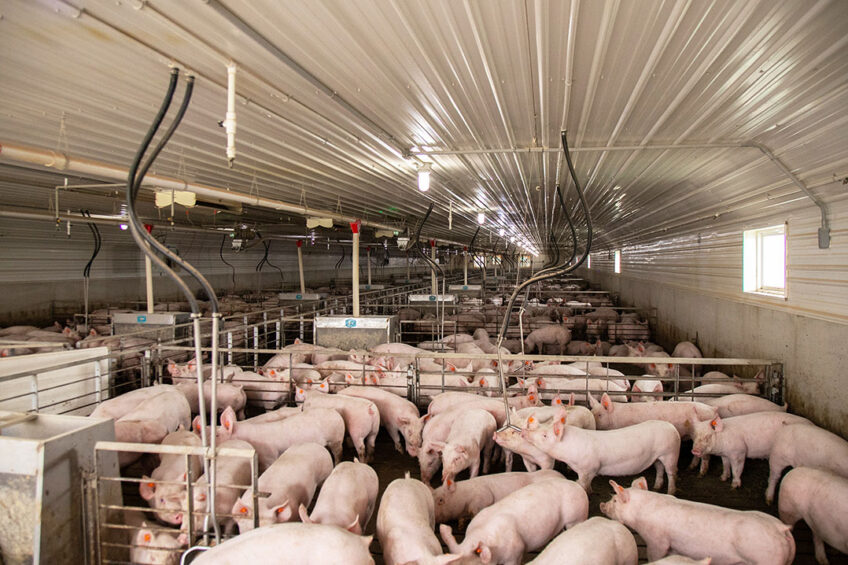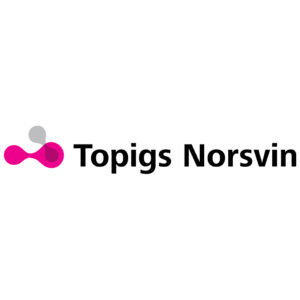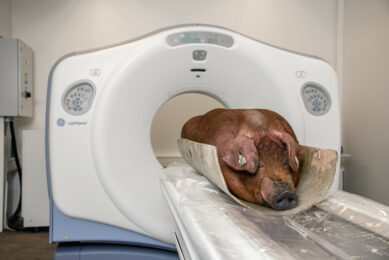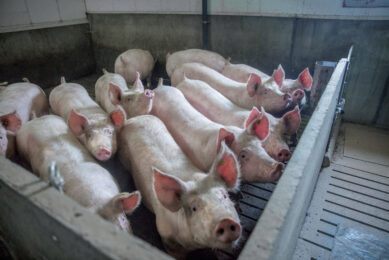Uniformity crucial in modern pork production

Uniformity is crucial for success throughout all phases of pork production. It leads to problem-free undisturbed production from rearing gilts to processing. Labour, animal welfare, efficiency and quality are all influenced by uniformity. Therefore traits that contribute to uniformity continue to grow in importance.
Life in pork production is far easier when producers have uniform litters and batches of pigs. A uniform and robust batch of pigs is beneficial in all phases of the production chain. As finding sufficient qualified labour is one of the major challenges the pig industry faces today, uniformity is growing in importance. A uniform group increases labour efficiency as fewer divergent animals disrupt the workflow.
At which moments in the production chain does uniformity play a key role?
Insemination
Sows all coming into heat on the same day after weaning ensures that insemination can be done quickly. It also means that the animals farrow at about the same time, which is also better in terms of labour efficiency.
Farrowing
A uniform litter of piglets at a sow with sufficient teats and milk production gives the piglets a good start from which they will benefit for the rest of their lives. They are stronger and require less handling, and less work is needed to make litters uniform so they fit the milk capacity of the sow. As no foster sows are needed, time is saved, animal welfare is improved and the barn can be used more efficiently.
Finishing phase
Uniformity also pays off in the piglet rearing and finisher phases. Feeding can be more efficient because all pigs are the same age and weight. Their needs are the same, making it easier to feed precisely according to those needs. This increases the effect of precision feeding. Even more important still, it also means lower feeding costs as feeding can be more finetuned and can have lower environmental impact, as fewer unused nutrients are excreted.
Delivering to slaughter
When delivering finisher pigs to slaughter, uniformity once again pays off. As the animals in a group are all roughly the same weight, a pen can be emptied faster and in fewer rounds. That saves labour and increases the turnover rate, reducing housing costs per kilogramme of meat produced.
Processing
Uniformity is also important in slaughter and processing, even though processors need variation in carcasses to supply the various markets with the right products. Uniform pigs and carcasses mean processing can be faster and more easily automated. Uniformity also reduces losses and makes it possible to deliver more uniform quality and portions to retail.
The importance of uniformity
The examples above clearly demonstrate the importance of uniformity during all phases of production and that it contributes throughout the pork production chain to increased animal welfare, less labour, more satisfied employees, better quality and higher efficiency.
Uniformity has therefore been part of Topigs Norsvin’s balanced breeding approach for many years, allowing solutions to be contributed to the challenges the swine industry is facing and the responsible production of pork.
About 25 years ago, the company started breeding and selecting for mothering abilities and piglet survival. That has not only led to lower losses, but also to higher uniformity. The approach also creates a good start for piglets and a problem-free undisturbed production to the end of the finisher stage.
Natural robustness contributes
Natural robustness is another of the company’s breeding priorities that contributes to uniformity. Naturally robust pigs can cope with production challenges, such as less optimal climate conditions, disease or feed that does not have the optimal nutrient composition. As a result, the pigs are less affected by these challenges and recover faster, leading to minimal disturbance and less loss of uniformity in the group.
Uniformity is a key element in modern pig production. Uniform groups of pigs can help to meet the challenges the pig industry faces. With the use of modern technology, genetics can improve uniformity even further still.




